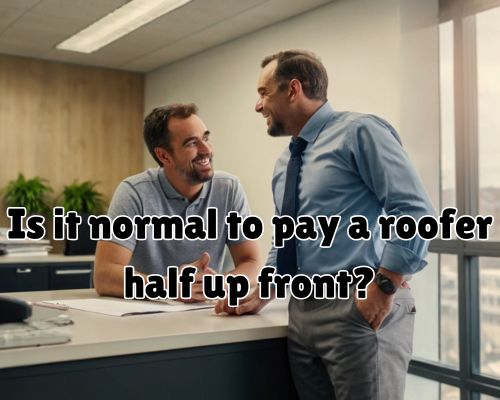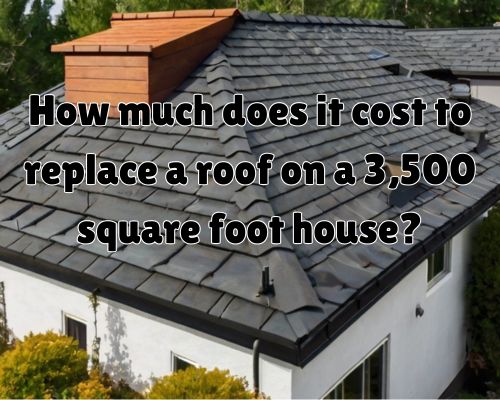Introduction
If you’re considering a career in the skilled trades, you might be wondering, Is commercial roofing a good career? In New Jersey, where commercial buildings are constantly being developed, maintained, and repaired, the demand for skilled roofing professionals remains strong. This article explores the advantages, salary potential, job security, and growth opportunities in the commercial roofing industry, with a focus on New Jersey’s economic landscape.

The Demand for Commercial Roofers in New Jersey
New Jersey’s commercial real estate market is robust, with thriving industries such as manufacturing, healthcare, and logistics requiring well-maintained buildings. The state’s location between major metropolitan areas like New York City and Philadelphia makes it a hub for commercial development. With ongoing infrastructure projects and weather-related roof repairs due to harsh winters and summer storms, skilled commercial roofers are in high demand.
According to the U.S. Bureau of Labor Statistics, the roofing industry is projected to grow by 2% in the coming years, but demand is even higher in states like New Jersey, where urban development continues to expand.
Job Stability and Security in Commercial Roofing
One of the biggest advantages of becoming a commercial roofer in New Jersey is job security. Unlike some trades that fluctuate with economic downturns, roofing remains a necessary service. Businesses, warehouses, hospitals, and government buildings require consistent roof maintenance and replacement, ensuring steady work for professionals in this field.
Additionally, labor shortages in the skilled trades have created a growing need for trained commercial roofers. Many seasoned professionals are retiring, leading to an increased demand for younger workers willing to enter the industry. This means that individuals entering commercial roofing today can expect consistent employment opportunities.
Salary and Earning Potential
Commercial roofing in New Jersey offers competitive wages compared to other skilled trades. According to industry data, the average salary for a commercial roofer in New Jersey ranges from $50,000 to $80,000 per year, with experienced professionals and those in specialized roles earning upwards of $100,000 annually.
Salaries vary based on factors such as certifications, union membership, and specialization. Many roofers who work with specialized materials like TPO, EPDM, and metal roofing can command higher wages. Additionally, union-affiliated roofers often receive benefits such as health insurance, pension plans, and paid leave.
See https://cjcommercialroofingnj.com/ for more.
Career Advancement Opportunities
Unlike some trades that have limited growth potential, commercial roofing offers several pathways for career advancement. Here are some of the key ways to grow within the industry:
- Apprenticeship and Training – Many commercial roofers start as apprentices and undergo on-the-job training to gain experience with various roofing systems.
- Certifications and Licensing – Acquiring certifications from organizations such as the National Roofing Contractors Association (NRCA) can enhance career prospects.
- Specialization – Learning to install green roofs, solar-integrated roofing systems, or advanced commercial waterproofing solutions can open doors to high-paying roles.
- Project Management and Business Ownership – With experience, roofers can become site supervisors, project managers, or even start their own commercial roofing companies.
Challenges in Commercial Roofing
While commercial roofing offers numerous benefits, it also comes with challenges. The work is physically demanding, requiring long hours in various weather conditions. Safety risks are a concern, but proper training and adherence to OSHA guidelines help mitigate these hazards. Additionally, the seasonal nature of roofing can lead to fluctuations in workload, although commercial projects often continue year-round compared to residential roofing.
The Role of Technology in Modern Roofing
Advancements in roofing technology have made the industry more efficient and safer. In New Jersey, many roofing contractors use drones for inspections, infrared thermal imaging for leak detection, and automated safety equipment to reduce workplace injuries. Learning these technologies can give aspiring roofers an edge in the industry and open doors to higher-paying positions. For more, go to https://cjcommercialroofingnj.com/.
Conclusion: Is Commercial Roofing a Good Career in New Jersey?
Yes, commercial roofing is an excellent career choice in New Jersey for those seeking job security, strong earning potential, and career growth opportunities. With the state’s booming commercial real estate market and high demand for skilled tradespeople, entering the roofing industry can provide a stable and rewarding career path.
If you’re willing to put in the hard work and invest in training, commercial roofing in New Jersey can be a lucrative and fulfilling profession. Whether you’re starting as an apprentice or looking to specialize in advanced roofing techniques, the industry has numerous opportunities for long-term success.


